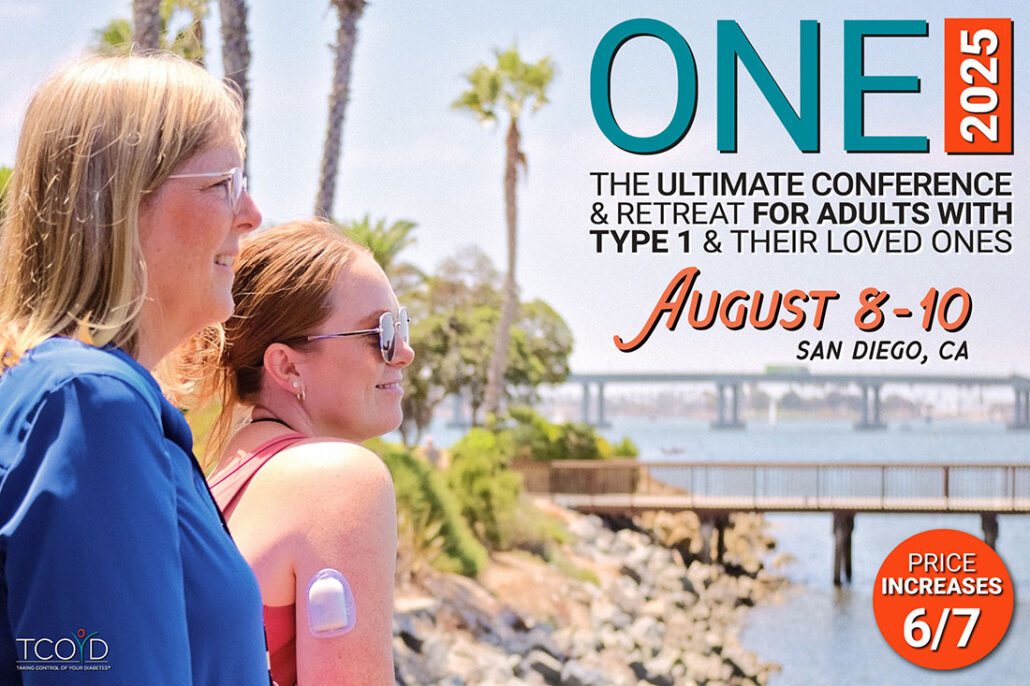
Dear TCOYD: There are so many sugar-free products available now, but are they really a better alternative for people with diabetes?
RD Janice Baker: Sugar is one of the ingredients I spend a lot of time discussing in my practice as a Registered Dietitian/Nutritionist and Certified Diabetes Care and Education Specialist.
Sugar is something you often hear needs to be avoided by people with diabetes because it “aggravates” blood glucose control. Regular sugar, and other carbohydrate sources in all kinds of foods, do have an impact on blood sugar. If you consume foods that contain regular sugar, it may be possible to influence the impact of the sugar and other carbs on your blood sugar level by including movement/activity after eating, adjusting insulin dose, and/or adjusting food portion sizes while monitoring the impact with a device such as a blood glucose meter or CGM.
Certain forms of sugar (such as glucose tablets or gels) are specifically made to raise blood sugar quickly when needed, and I advise most of my patients who have diabetes and are on therapies (such as insulin) that can lead to hypoglycemia to keep these products on hand for safety, just in case of a low blood sugar event.
But when it comes to enjoying a piece of candy, dessert, or other sweet treat, is it “better” for people with diabetes to choose a sugar-free option?
First let me explain that foods labeled “sugar-free,” “low carb” or “diet” often contain sugar substitutes, which fall into three categories: artificial sweeteners, sugar alcohols, and novel sweeteners.
Artificial Sweeteners
Most artificial sweeteners (also called non-nutritive sweeteners) are created in a lab or made from natural substances like herbs (stevia, monk fruit). They can be 200 to 700 times sweeter than table sugar. They are regulated by the U.S. Food and Drug Administration (FDA) as food additives and are safe for most people to use in normal amounts.
Artificial sweeteners have been an option for people who need to monitor their blood glucose levels or weight. Speculation about the benefits/risks of artificial sweeteners is a hot topic. Research on this is ongoing, and past studies regarding health risks were conducted on animals, not humans. Studies with humans have shown these products to be generally safe if more than the acceptable daily intake for each is not consumed.
The FDA has approved several artificial sweeteners: acesulfame potassium (Ace-K), aspartame, neotame, saccharin, sucralose, and sugar alcohols. Sugar alcohols are created synthetically (typically from sugars themselves).
Sugar Alcohols
Sugar alcohols are used in many processed foods. They’re not as sweet as artificial sweeteners, and they add texture and taste to foods like chewing gum and hard candies. They can cause gastrointestinal irritation like bloating, gas, or diarrhea in some people. Unlike other sugar substitutes, sugar alcohols must be listed on nutrition facts labels. Examples include: erythritol, isomalt, lactitol, maltitol, sorbitol (often used in medications), and xylitol.
Novel Sweeteners
Other “more natural” or novel sweeteners have recently risen in popularity. Examples include: allulose, monk fruit, stevia, and tagatose. These sweeteners are generally free from any significant gastrointestinal side effects, but as with most non-nutritive sweeteners, a major downside may be the taste. Stevia has a mild, licorice-like taste that’s slightly bitter. Different brands of stevia products may also differ in taste, depending on the part of the stevia plant that is used. Keep in mind that products made from novel sweeteners along with sugar alcohols may cause digestive problems, such as bloating and diarrhea as mentioned above.
Artificial Sweeteners’ Effect on Blood Sugars
Artificial sweeteners and sugar alcohols do have less of an impact on blood glucose levels than regular sugar, and they also have fewer calories (some have no calories at all). But sugar-free cookies and cakes still contain other sources of carbs, such as flour. Remember, sugar-free is neither calorie-free nor carb-free, so you should still read food labels and take into consideration both the calories and the carbs for these foods.
The Bottom Line
In the bigger picture, food is food- there are no “bad or good” foods- it’s all about context including personal health goals, access to food, budget, culture, medical status, and many other factors. It’s important to “zoom out” and look at the use of foods in context of the diet pattern, and not just which foods are used, but how they are used. We are all entitled to the pleasure and satisfaction that food brings us- it’s an important part of our quality of life!
If you have further questions, consider reaching out to a Registered Dietitian/Nutritionist or Certified Diabetes Care and Education Specialist for individualized guidance.
Janice Baker, MBA, RDN, CDCES CNSC, BC-ADM
Registered Dietitian/Nutritionist, Certified Diabetes Care and Education Specialist, Certified Nutrition Support Clinician, Board Certified- Advanced Diabetes Management
Jbaker9@gmail.com Facebook: @BakerNutrition


Leave a Reply